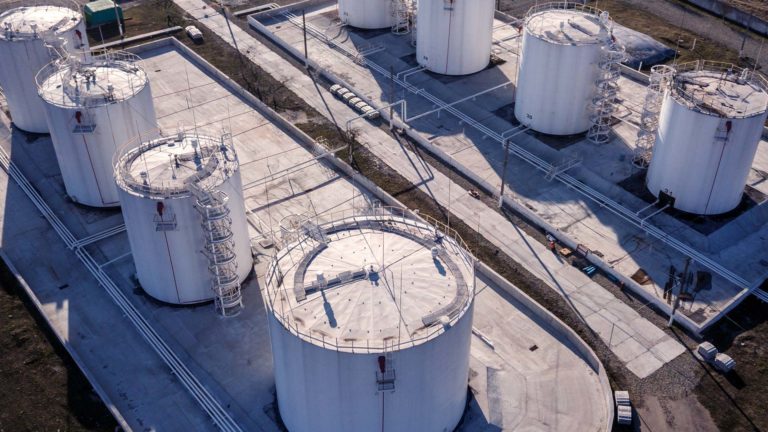Exactly How to Ensure Conformity with Tank Welding Inspection Standards
Exactly How to Ensure Conformity with Tank Welding Inspection Standards
Blog Article
A Detailed Summary of Container Welding Inspection Standards and Methodologies for Improved Weld High Quality and Efficiency
The importance of welding examination requirements in the manufacturing of containers can not be overemphasized, as they serve as the foundation for ensuring weld stability and functional dependability. Numerous evaluation methods, consisting of visual evaluations and progressed non-destructive testing approaches, are vital in identifying possible imperfections that could jeopardize efficiency. Adhering to regulatory standards not only enhances weld high quality however likewise alleviates the danger of costly failures. As we explore the nuances of these approaches, it ends up being important to consider how an organized method can transform present techniques and cause substantial renovations in outcomes.
Importance of Welding Inspection Specifications

Welding inspection standards encompass a series of standards, including product requirements, welding procedures, and credentials of employees entailed in the welding procedure. By enforcing these requirements, companies can systematically recognize and remedy potential flaws, consequently lowering the chance of pricey fixings or catastrophic failings. Strenuous examination practices promote a society of accountability and accuracy, motivating welders to preserve high levels of craftsmanship.

Usual Welding Inspection Methods


Ultrasonic Testing (UT) is one more common method, utilizing high-frequency sound waves to identify interior imperfections that might not show up on the surface. This approach is particularly effective for identifying voids or inclusions within the weld metal. Magnetic Particle Evaluating (MT) is also commonly made use of, especially for ferromagnetic products, as it discloses surface area and near-surface defects via the application of magnetic fields and ferrous particles.
Additionally, Liquid Penetrant Screening (PT) identifies surface-breaking flaws by using a penetrant to the weld and afterwards making use of a programmer to extract the penetrant. Each of these methods adds to a comprehensive evaluation method, guaranteeing that welds fulfill the rigid quality criteria needed in container building.
Regulatory Standards and Conformity
Governing criteria and conformity are important components in guaranteeing the security and dependability of bonded structures in tank building - Tank Welding Inspection. These standards offer to establish minimum demands for product homes, welding procedures, and assessment practices, therefore decreasing the danger of structural failings and improving overall efficiency
Key companies, such as the American Society of Mechanical Engineers (ASME) and the American Welding Society (AWS), give guidelines that are commonly embraced in the sector. Compliance with these requirements not only makes certain adherence to ideal techniques yet likewise satisfies lawful and legal responsibilities, protecting the interests of stakeholders.
Regulative bodies commonly mandate adherence to specific codes, such as ASME Code Section try this website IX for welding certifications and API 650 for welded storage tanks. These codes describe demands for welding strategies, credentials of workers, and screening techniques to confirm weld stability.
Normal audits and examinations are critical to maintaining compliance, as they help determine deviations from established criteria. Non-compliance can lead to substantial charges, project delays, and safety risks. Thus, a durable understanding of governing criteria and a dedication to compliance are vital in achieving high-grade and durable bonded container frameworks.
Non-Destructive Testing Techniques
Exactly how can the integrity of bonded structures be assured without causing damage? Non-destructive testing (NDT) approaches provide a robust option, enabling examiners to examine weld top quality without jeopardizing the material - Tank Welding Inspection. Amongst the most common NDT methods are ultrasonic screening (UT), radiographic Get the facts screening (RT), magnetic particle testing (MT), and dye penetrant testing (PT)
Radiographic screening involves passing X-rays or gamma rays through the weld, producing pictures that disclose architectural problems such as cracks or gaps. This technique is very useful for assessing the integrity of complicated welds.
Magnetic fragment testing is suited for ferromagnetic materials, where electromagnetic fields reveal surface and near-surface suspensions. Color penetrant testing uses a liquid color to highlight surface-breaking defects, making it an effective technique for non-porous products.
Each of these NDT approaches has unique advantages, enabling detailed evaluations tailored to certain materials and welding processes. By executing these methods, sectors can guarantee the dependability and security of welded structures, eventually boosting total efficiency.
Enhancing Weld Quality Via Evaluation
Efficient evaluation plays a vital duty in enhancing weld top quality, acting as a vital checkpoint in the construction procedure. By determining possible flaws early, examinations reduce the danger websites of endangered architectural stability and make sure compliance with sector criteria. Using a combination of visual examinations, non-destructive testing (NDT) methods, and mechanical analyses, inspectors can discover problems such as porosity, fractures, and incomplete combination.
Implementing a durable inspection protocol not just boosts the total quality of welds but also promotes a society of liability among welders and makers. Regular training and accreditation of inspection workers make sure that they are geared up with the required skills to recognize and address possible issues successfully. This positive method decreases rework and connected expenses, ultimately adding to predict effectiveness.
Furthermore, extensive documentation of examination searchings for provides useful insights right into repeating problems, promoting continuous renovation in welding methods. By leveraging sophisticated technologies, such as automated ultrasonic screening or digital radiography, weld top quality can be improved through a lot more precise examinations. Finally, an extensive inspection procedure is important in achieving high-grade welds, making sure security, integrity, and longevity in container construction.
Verdict
In final thought, the implementation of extensive container welding evaluation requirements and techniques is vital for making certain weld stability and efficiency. By utilizing a mix of aesthetic evaluations, non-destructive screening approaches, and adherence to regulatory requirements, companies can effectively recognize and alleviate potential problems. Promoting a society of accountability among welders additionally enhances the quality of welding processes. Inevitably, these methods add to lowered architectural failures, reduced repair costs, and boosted operational effectiveness within the market.
Report this page